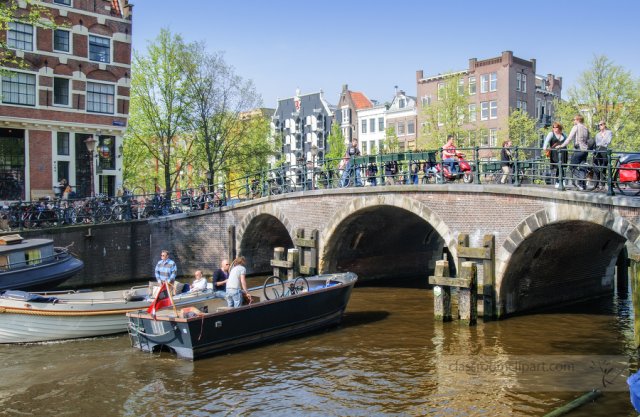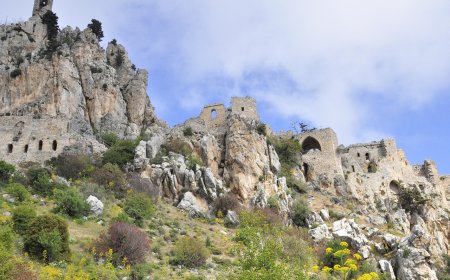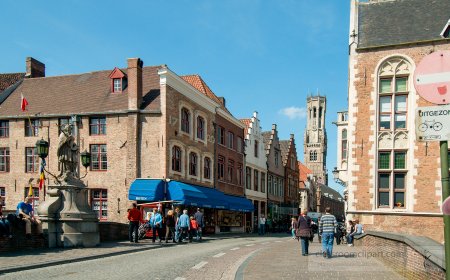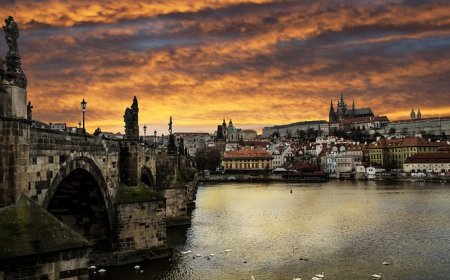The Netherlands: Geography, Culture, and History for Students
Explore the Netherlands’ geography, windmills, canals, and traditions in this student-friendly article. Learn about Dutch cities, biking, and the land below sea level

🇳🇱 The Netherlands: Land of Windmills, Bikes, and Tulips
🗺 Introduction
The Netherlands is a small country in Western Europe known for its windmills, tulip fields, bicycles, and canals. It’s one of the most densely populated countries in the world, but it's also one of the flattest. Much of the country sits below sea level, yet the Dutch have found smart ways to manage water and protect their land.
In this article, you’ll learn about the Netherlands’ geography, cities, culture, traditions, and unique way of life. From cheese markets and art museums to biking through flower fields, the Netherlands is full of creativity and charm.
🌍 Geography and Location
The Netherlands is located in northwestern Europe and borders Germany to the east, Belgium to the south, and the North Sea to the west. A large part of the country lies below sea level, so the Dutch have built an advanced system of dikes, canals, and polders (land reclaimed from the sea).
The land is mostly flat, which makes it perfect for biking and farming. The Netherlands is famous for its colorful tulip fields, open green pastures, and charming villages. Because of its coastal location, the country has a mild climate with cool summers, mild winters, and frequent rain.
🏙 Cities and Regions
The capital city of the Netherlands is Amsterdam, a vibrant city known for its canals, houseboats, art museums, and bicycle traffic. Amsterdam is home to famous attractions like the Rijksmuseum, the Anne Frank House, and the Van Gogh Museum.
Other important cities include:
- Rotterdam, a modern port city with futuristic buildings and Europe’s largest seaport
- The Hague, where the Dutch government and the International Court of Justice are located
- Utrecht, a university town with canals and medieval architecture
- Eindhoven, a center for design and technology
The Netherlands is made up of 12 provinces, each with its own traditions, foods, and landscapes.
👨👩👧👦 People, Language, and Culture
The Netherlands has a population of about 17.8 million people, making it one of the most crowded countries in Europe. The people are called Dutch, and they speak the Dutch language. Many Dutch people also speak English, and some speak German or French.
Dutch society values freedom, tolerance, and innovation. People are known for being practical, friendly, and direct in communication. The Netherlands is also a leader in education, art, and human rights.
Biking is a huge part of everyday life. There are more bicycles than people in the country, and nearly every city and village has safe bike paths. Children often ride their bikes to school, and even adults use bikes to go to work or shop for groceries.
🍽 Food and Traditions
Dutch food is simple and hearty, based on dairy, potatoes, bread, and seasonal vegetables. The Netherlands is also known for its many types of cheese, especially Gouda and Edam.
Popular Dutch foods include:
- Stroopwafels, thin waffle cookies filled with caramel syrup
- Poffertjes, tiny fluffy pancakes served with powdered sugar and butter
- Haring, raw herring fish often eaten with onions and pickles
- Erwtensoep, a thick pea soup with sausage, eaten in winter
- Bitterballen, small fried meat snacks often served with mustard
The Netherlands celebrates holidays like King’s Day on April 27, when people dress in orange and join in street parades, games, and festivals. In December, children look forward to Sinterklaas, a holiday similar to Christmas, with gifts, songs, and traditional treats.
🏛 History of the Netherlands
The Netherlands has a long and interesting history. During the 1600s, the country experienced its Golden Age, becoming one of the world’s richest and most powerful nations thanks to trade, exploration, and art. This period gave the world artists like Rembrandt and Vermeer, as well as the famous Dutch East India Company.
The Dutch have always fought hard against flooding and the sea, building windmills, canals, and dikes to protect their land. They were also early leaders in creating a democratic government and promoting religious freedom.
During World War II, the Netherlands was occupied by Nazi Germany. The story of Anne Frank, a young girl who hid from the Nazis and wrote a diary, is one of the most famous accounts from this time.
After the war, the country rebuilt quickly and became a founding member of the European Union, the United Nations, and NATO.
🌿 Nature and Environment
The Dutch love nature and take care of their land. Even though the country is small and flat, it has many nature reserves, wetlands, and coastal dunes. Birds, foxes, deer, and seals live in different regions across the Netherlands.
The Netherlands is a world leader in sustainable living. It uses wind energy, builds green buildings, and grows crops in high-tech greenhouses. Dutch farmers are experts in growing food using limited space and resources.
The Dutch also create floating neighborhoods and movable flood barriers to deal with rising sea levels caused by climate change.
🧠 Why the Netherlands Matters
The Netherlands shows the world how to live wisely, kindly, and innovatively. From designing beautiful cities and caring for the planet to creating amazing art and standing up for human rights, the Dutch have made lasting contributions to global culture and knowledge.
Whether you're riding through a tulip field or tasting a stroopwafel, the Netherlands offers a fun, fascinating experience for every curious learner.
📚 Vocabulary List
| Word | Definition |
|---|---|
| Dike | A wall built to hold back water and prevent flooding |
| Polder | Land reclaimed from water by draining lakes or seas |
| Stroopwafel | A Dutch cookie made of two thin waffles with syrup inside |
| Canal | A man-made waterway used for transportation and water control |
| Bitterballen | Fried meatballs served as a snack in the Netherlands |
| Golden Age | A period of great wealth, trade, and art in Dutch history during the 1600s |
| Tolerance | Accepting and respecting differences in people and ideas |
| Sinterklaas | A traditional Dutch holiday figure, similar to Santa Claus |
✨ Fun Facts About the Netherlands
The Netherlands has more bicycles than people—over 22 million!
Dutch engineers helped build floating farms and entire artificial islands.
Tulips, now a symbol of the Netherlands, actually came from Turkey.
The Dutch are among the tallest people in the world.
The Dutch royal family is one of the oldest monarchies in Europe.
👧🧒 Kid-Friendly Summary
The Netherlands is a country full of bikes, windmills, and colorful tulips. It’s flat and green, with friendly people and fun foods like stroopwafels and poffertjes. People speak Dutch, ride bikes everywhere, and love their traditions. It’s a smart, clean, and cheerful country with a lot to discover!
🧠 Interactive Quiz: How Well Do You Know the Netherlands?
1. What is the capital of the Netherlands?
A) Rotterdam
B) The Hague
C) Amsterdam
D) Utrecht
2. What landform do the Dutch build to keep out water?
A) Volcano
B) Dike
C) Hill
D) Dam
3. What are polders?
A) Tall buildings
B) Underwater tunnels
C) Land reclaimed from the sea
D) Types of cheese
4. What kind of cookie is a stroopwafel?
A) Chocolate chip
B) Waffle with syrup
C) Cream-filled
D) Biscuit with fruit
5. What Dutch city is famous for canals and museums?
A) Eindhoven
B) Utrecht
C) Amsterdam
D) Bern
6. What is King’s Day?
A) A biking contest
B) A holiday honoring Dutch royalty
C) A Christmas parade
D) A national food day
7. What is the Dutch language called?
A) German
B) French
C) Dutch
D) Danish
8. What Dutch girl became famous for her World War II diary?
A) Anne Frank
B) Marie Curie
C) Helen Keller
D) Rosa Parks




















































